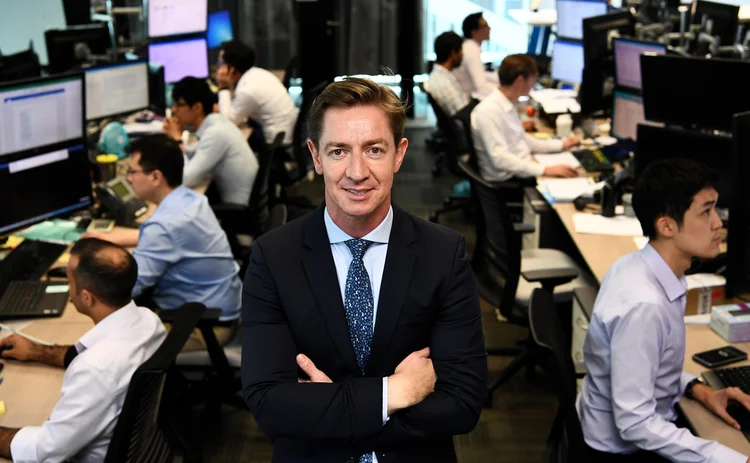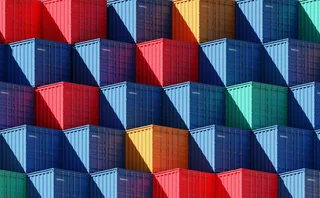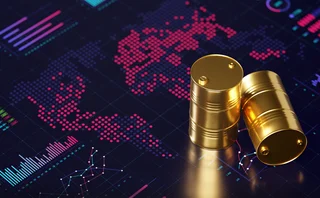
Corporate risk manager of the year, Asia: Engie Global Energy Management
Energy Risk Asia awards, 2018: Engie maintains global LNG presence and enhances risk management after sale of upstream assets

Following the sale of its upstream liquified natural gas (LNG) business in July 2018 to French oil and gas major Total, Engie’s trading and risk management arm Global Energy Management (Gem) absorbed its remaining downstream LNG activities. While Gem had previously only managed the LNG unit’s hedging activities, combining the physical and financial LNG business under one roof necessitated the alignment of the legacy unit’s risk management practices with that of Engie’s trading business. The resulting business now uses both the physical and financial aspects of Engie’s LNG expertise to offer clients a range of solutions protected by a robust internal risk management strategy.
As a large trading business, Gem is subject to stricter financial regulations than the legacy LNG business, which had previously conducted portfolio management activities with long-term contracts. “Our financial derivatives business is fully regulated by the financial authority ACPR in France, and so it is subject to all of the same capital rules and other regulations that would apply to a large bank,” explains Eric Strongin, chief risk officer for Gem in Asia-Pacific at Engie.
“As a result, Gem has much tighter and more rigorous standards for risk management even on the non-regulated business than the former LNG unit, so we also had to do the necessary KYC [know your customer] and other credit checks.”
For market risk management purposes, Gem adheres to “full, bank-style Basel-mandated value-at-risk stress tests,” Strongin says, and must maintain the necessary level of capital against those measures. “We have a variety of sophisticated risk management systems, both for derivatives and physical products,” he continues.
Our financial derivatives business is fully regulated by the financial authority ACPR in France, and so it is subject to all of the same capital rules and other regulations that would apply to a large bank
Eric Strongin, Engie Global Energy Management
In addition, Gem can leverage Engie’s global footprint and its position as a major power and gas trader in Europe to manage the physical risks arising from its LNG portfolio. “We can easily manage [Dutch gas hub] TTF and [the UK’s national balancing point] NBP exposures, plus we have a large trading office in Houston to manage any US price exposures there,” he says. “And we have a wide variety of assets around the globe that provide us with the optionality and flexibility to continue to offer risk management services to clients.”
Over the three months following the completion of the Total transaction in July 2018, Gem traded more than 30 cargoes, equivalent to almost three million tonnes of LNG, according to Gordon Waters, chief executive officer of Gem in Asia-Pacific and global head of LNG at Engie. As a result of this activity, he says Gem is “definitely getting a lot of attention in the space, even though we are essentially a new entrant after the Total deal”. The LNG desk is now expanding and Waters says there are plans to add two new traders to the existing team in the near future.
Beyond LNG, Gem is increasing its footprint in the Asian renewables energy sector, thanks to its position as a major power market participant. By offering power purchase agreements and structured solutions that include offtake deals or hedging strategies, it can help clients by absorbing the risks associated with intermittent power sources. It is also currently working with project developers to design risk management solutions over a longer-term horizon than is usually available.
“We can provide clients with more visibility over their revenues, but managing the associated risks is very challenging, especially if you consider that liquidity in these markets – even for the baseload – is quite reduced more than two years ahead,” says Guillaume Servajean, business developer for Gem in Asia-Pacific, at Engie. “We really need to have strong modelling capabilities and be able to use our experience of other markets.” Engie is already active in the European and US renewables sectors.
When working with clients in the power and gas markets in Asia, Waters believes Gem is often perceived favourably because of its utility background and experience in the markets. Its internal risk management systems and processes also contribute to the perception of the business as an experienced potential partner that can add value to a project.
“Rather than being seen as a competitor, we are often viewed as a utility providing a service, not trading against them.” he says. “Certainly, when we are looking at joint ventures, potential partners are interested in Engie because we have developed the level of complexity that they are aiming for – we have gone through that learning curve.”
Only users who have a paid subscription or are part of a corporate subscription are able to print or copy content.
To access these options, along with all other subscription benefits, please contact info@risk.net or view our subscription options here: http://subscriptions.risk.net/subscribe
You are currently unable to print this content. Please contact info@risk.net to find out more.
You are currently unable to copy this content. Please contact info@risk.net to find out more.
Copyright Infopro Digital Limited. All rights reserved.
As outlined in our terms and conditions, https://www.infopro-digital.com/terms-and-conditions/subscriptions/ (point 2.4), printing is limited to a single copy.
If you would like to purchase additional rights please email info@risk.net
Copyright Infopro Digital Limited. All rights reserved.
You may share this content using our article tools. As outlined in our terms and conditions, https://www.infopro-digital.com/terms-and-conditions/subscriptions/ (clause 2.4), an Authorised User may only make one copy of the materials for their own personal use. You must also comply with the restrictions in clause 2.5.
If you would like to purchase additional rights please email info@risk.net
More on Commodities
Energy Risk Asia Awards 2024: The winners
Winning firms adapt to change with exemplary risk management skills
Foreign funds are bulls in China’s onshore commodity futures
Growing participation from overseas investors is boosting liquidity in what’s already a boom market
Energy Risk Software Rankings 2024: IT demands increase amid rising risk
Heightened geopolitical and credit risk increase requirements on commodities software
Energy Risk Asia Awards 2023: The winners
Winning firms demonstrate resilience and robust risk management amid testing times
ION Commodities: addressing the market’s recent pain points
Energy Risk Software Rankings winner’s interview: ION Commodities
Energy Risk Commodity Rankings 2023: adapting to new market dynamics
Winners of the 2023 Commodity Rankings provided reliability when clients faced extreme change
Energy Risk Software Rankings 2023: managing uncertainty
Unpredictable markets make CTRM software choices key
Navigating the volatility and complexity of commodity markets
Commodity markets have experienced significant challenges since the Covid-19 pandemic, the conflict in Ukraine and the subsequent sanctions imposed on Russia. These unprecedented events have caused fluctuations in supply and demand, disrupted global…








